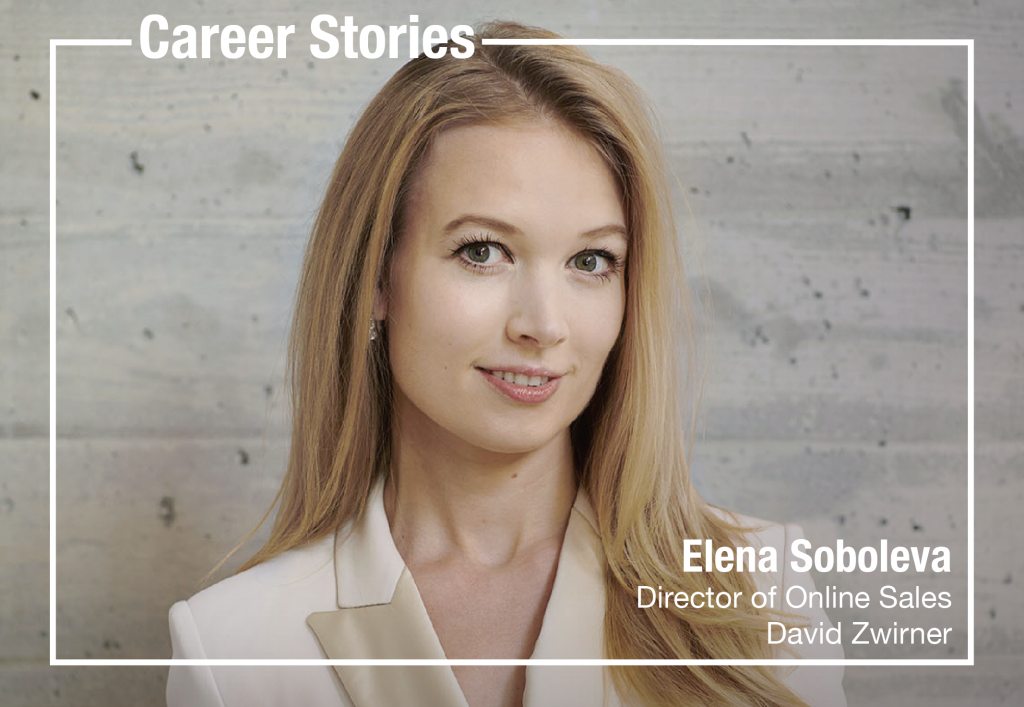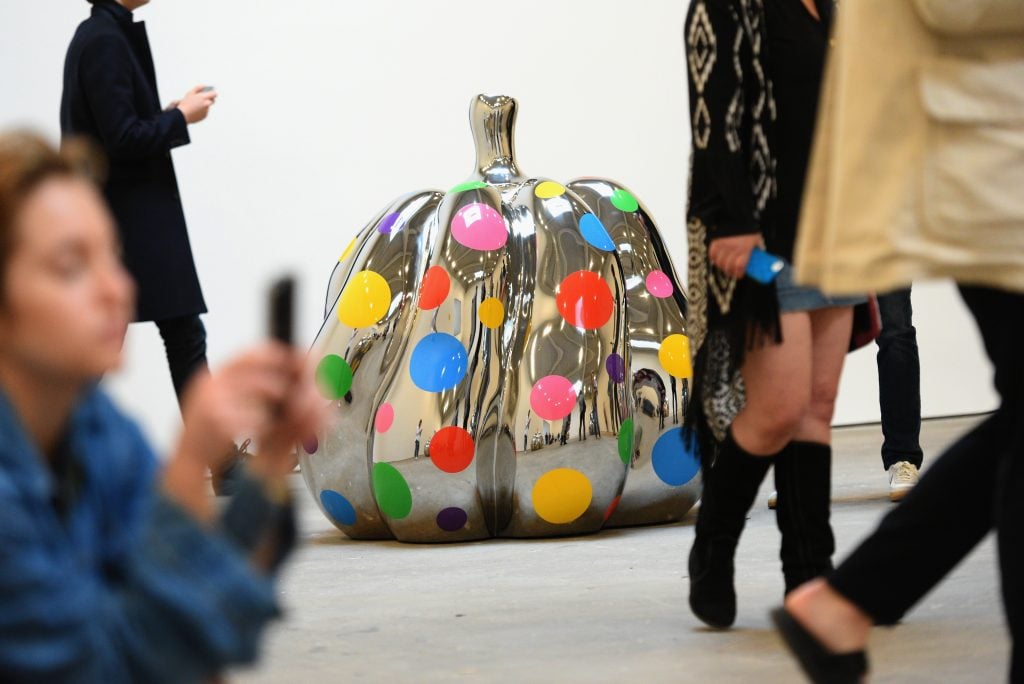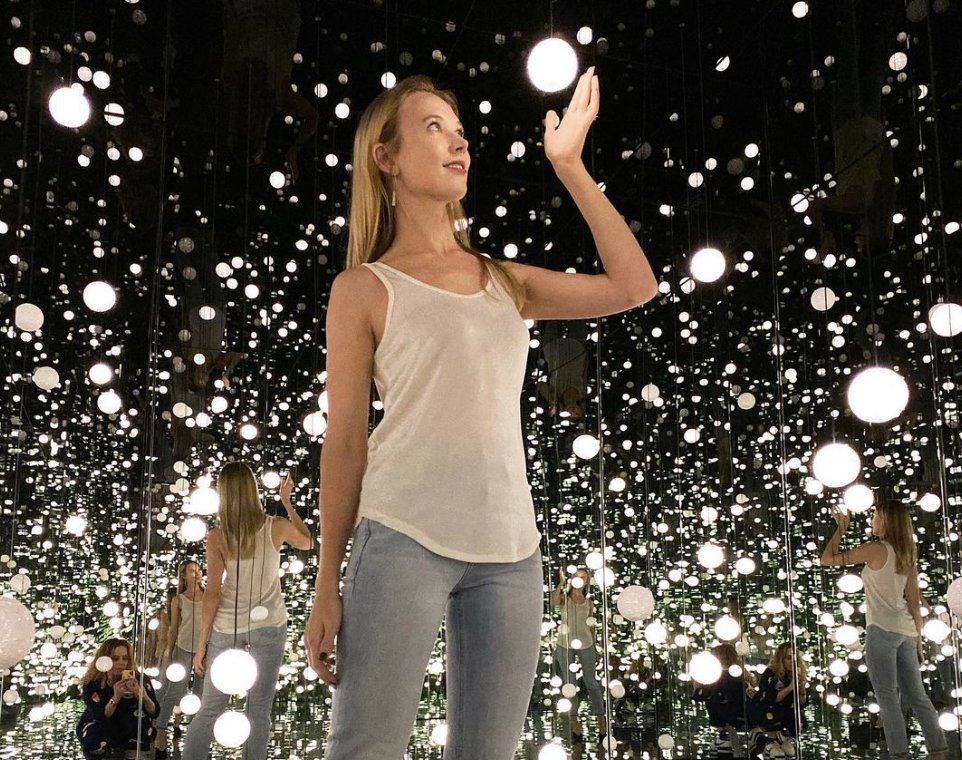Career Stories
Elena Soboleva Once Considered a Career as a Physicist. Now, She’s Changing the Way Blue-Chip Galleries Sell Art Online
In this series, we explore the career paths of art industry pros.

In this series, we explore the career paths of art industry pros.

Katie Rothstein

No two paths to a successful career in the art world look the same. In our series “Career Stories,” we’re checking in with some of the high-powered people in the art industry to hear about everything from their first brushes with art to the advice they would give their younger selves.
As the first-ever director of online sales at David Zwirner, Elena Soboleva is charting new territory in the notoriously analogue art world. Coming from a family of scientists, she once considered pursuing physics in college before eventually settling on economics and art history.
“I was attracted to the study of universal ideas through clear methodology, combined with abstract thinking,” she says. “In many ways, art appealed to me for the same reason.”
Soboleva’s career has since taken her from galleries to auction houses to online marketplaces and back. While working as a gallery assistant at Jack Shainman after college, she was tasked with setting up social accounts and filming YouTube walkthroughs because she was the youngest person at the gallery at the time. “It was the best kind of learning to have, and made the potential of the digital sphere come into focus,” she says.
Read on to hear more about what Soboleva imagines the art world will look like in 10 years, how she ended up where she is now, and why she thinks the future of the art world on social media may be in video content.
How did working in the other segments of the art industry prepare you for your current role at a gallery?
If you work in the creative sector, your career evolution is not linear, and every opportunity should be embraced since you can always learn from every colleague, role, and situation. It can be very daunting trying to find a job, especially at the start, so it’s important to stand out and show your drive and motivation. Look for opportunities with the highest growth potential—even if there are more stable or established roles, jump on the ones where there is real momentum.

A Pumpkin sculpture by Yayoi Kusama sold for $1.8 million in an online sale spearheaded by Soboleva and tied to Art Basel 2019. Photo by Andrew Toth/Getty Images.
Tell us a bit of the backstory about how you ended up in a role that is new to both David Zwirner and the art world as a whole. How has the role changed (or not changed) from what it originally was when you started two years ago?
I started at the gallery in October of 2018, and was brought into a role that David and I dreamed up together. While this role had not yet existed in the art world, the gallery had a strong online program already and had launched the first Online Viewing Room in 2017. It was exciting to be able to write a job description from scratch.
Obviously, the role has evolved greatly since I joined, the team has grown a lot, and the cadence of projects has increased. In 2018, we launched two online projects per month, and this year, in the midst of lockdown, we were launching three per week.
Given the nature of art and the need to experience things in person, how do you think the digital and in-person sides of the art world will evolve and merge together in the next 5 to 10 years?
As I have mentioned before, I see the future as truly hybrid. Ten years is a long time, but we can try to imagine: I see more artists’ voices being part of the cultural conversation, artist communities thriving outside of large cities, and many more global voices joining the dialogue. Screens will be anachronistic and biointegrated devices will allow us to discover and transact seamlessly. Drones or autonomous art-shipping trucks will be dispatched to instantly deliver the work.
Sustainability will be a key issue, and I think artists will factor that into their work. Instead of shipping artworks between continents, sculptures might be 3D-printed locally. Polymer and chemical technology could produce paints which are more resistant, and artworks can then be rolled up to be shipped to avoid the crating processes. More artists will venture into virtual worlds and create works for this format, as people spend an increasing amount of time in these parallel realms. It will be a natural extension of their practice and we will see curators and museums emerge in this context as well. The fashion world and music events are already experimenting with these interactive environments.
Ultimately, the power of museums, galleries, and the physical object of art will be stronger than ever. As the rest of the world moves further into a virtual frontier, we will crave the sensory, material presence of artworks which the digital world cannot replicate.

Elena Soboleva in the Yayoi Kusama Infinity Room at David Zwirner in 2019. Photo via @elenasoboleva on Instagram.
With 23,200 followers and counting on Instagram, you have been able to make the inside of the art world accessible to your followers. How do you view your role as an influencer in the art world space, and do you enjoy it?
I don’t really consider myself an influencer since I don’t do that for a living. I enjoy social media as a way to create and foster dialogue, and share what I am thinking about and looking at. I find the label “influencer” one-sided. When my role at David Zwirner was announced, there were some articles citing that. In truth, I got the job not because of my Instagram (and I am quite sure David had not even seen it), but rather because I had ideas for how to grow the digital gallery space and a decade of experience.
What do you think is the future of the art world on social media? What are some things you have observed about the way the art world does (and does not) engage with social media trends?
We have been moving into the direction of video and live content, and with the advent of 5G and more storage on our smartphones, that has gained mainstream adoption. The fundamental nature of social media is changing as well, and products like Instagram Reels and TikTok prioritize content through advanced data algorithms, which amplify the videos to an audience far beyond those who follow you. So I might only have a few thousand followers on TikTok, but I can reach millions of people with a 10-second video, which is a whole different level of reach.
What is one piece of advice you would give your younger self at the start of your career?
Failure is a critical part of trying to make anything happen. Unfortunately, when you are young and applying for a dream role that you don’t get, it seems like such a let down, but it’s the only way you know you are actually testing the limits of your potential. I would advise anyone to learn to embrace failures as a testament of pushing yourself forward.
I recall applying for the prestigious MoMA internship and, two years in a row, made it through the rounds of the interview process but did not get offered the internship. It seemed like such a disappointment at the time but I would not trade my career path for any opportunity now, and love the fact that I’ve been able to forge my own way.